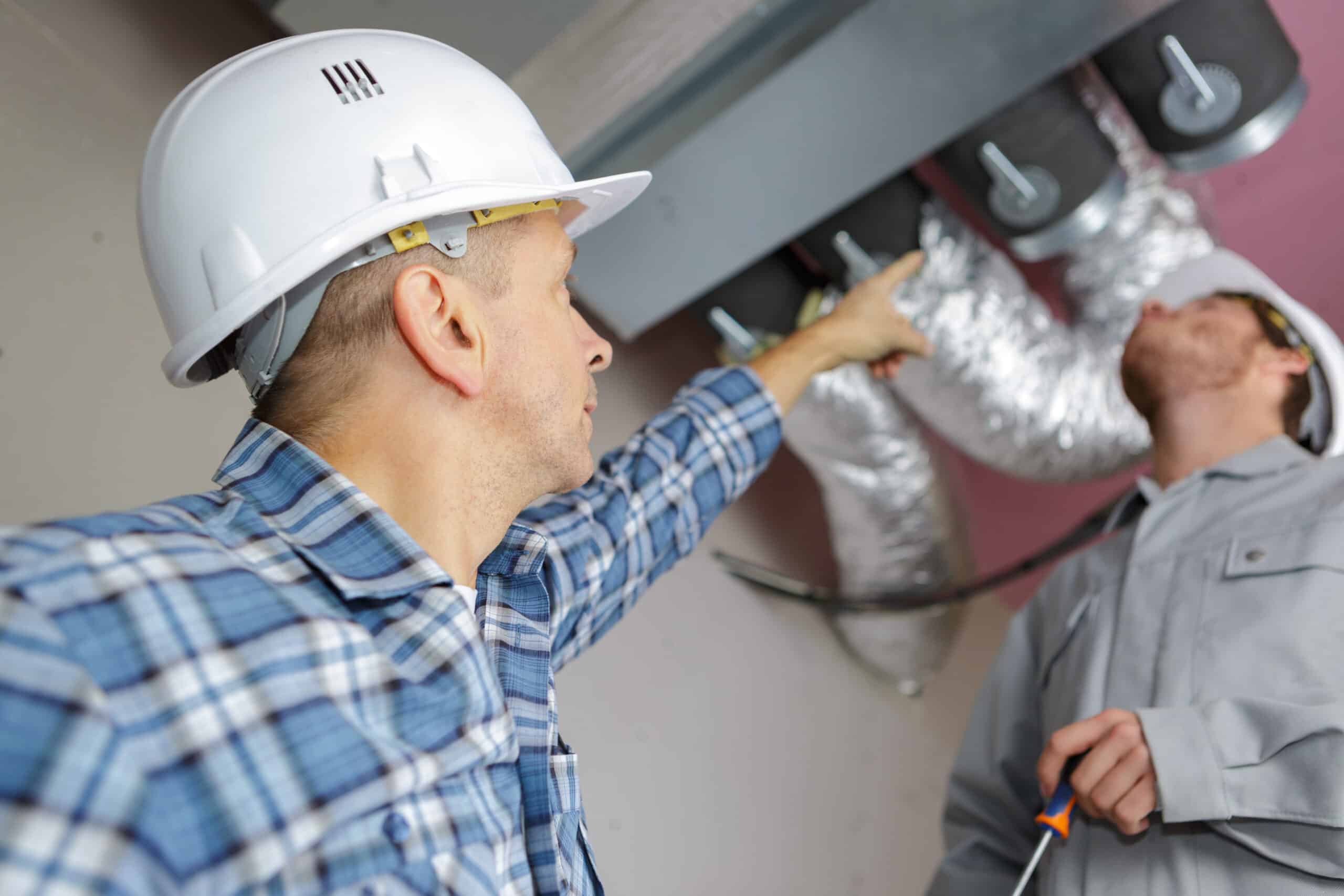Residential & Commercial Duct Repair
Ductwork is the vehicle used to distribute airflow produced by heating & cooling systems. It pulls air from throughout the building into the HVAC unit where it is heated or cooled and returned back through the ductwork to quietly heat or cool each room. Improperly designed ductwork can cause the HVAC systems to operate inefficiently.
Ductwork is made from materials that will allow for air to move efficiently. The most popular duct material, galvanized steel is coated in zinc. Zinc inhibits rust and keeps costs down. Galvanized steel ducts are lined with a fiberglass blanket (duct lining) or wrapped externally in duct wrap that serves as a barrier between the ducts and the crawl space or attic where they are installed. Although not as common as galvanized steel, aluminum makes a great solution for spaces that require on site customization.

Duct Work and Mold?
Ductwork is installed in crawlspaces, attics or other out of the way places, so proper installation is key to its efficiency. Ductwork is separated from the attic or crawlspace with insulation. If seams aren’t sealed properly, the ducts aren’t installed properly, or if at any time ducts become punctured, the whole HVAC system works inefficiently. An inefficient working HVAC system will not only make the space uncomfortable, but moisture is allowed to remain in the air, and costly utility bills and repairs are definitely on the horizon. Sizing is also an important factor of ductwork. Each HVAC unit is rated for a specific duct size.
Duct Work For Sound Control
Polyurethane is used as a foaming agent which makes is a great insulator. Built-in thermal insulation is the primary benefit of fiberglass duct board. This can also be a great option for places where sound control is important. Flexible plastic over metal coils make up this tube-shaped ductwork. Available in a myriad of configurations, flexible ducting is most often used for attaching the outlets that supply rigid ductwork.
Duct systems utilize multiple components that make it operate smoothly. Vibration isolators reduce vibration caused when air is pushed through the duct system. Vibration isolators are inserted into the AC duct system either right before or right after the air handler. When the air handler is working, it utilizes a blower that causes vibration and using the vibration isolators helps to keep the noise to a minimum.


